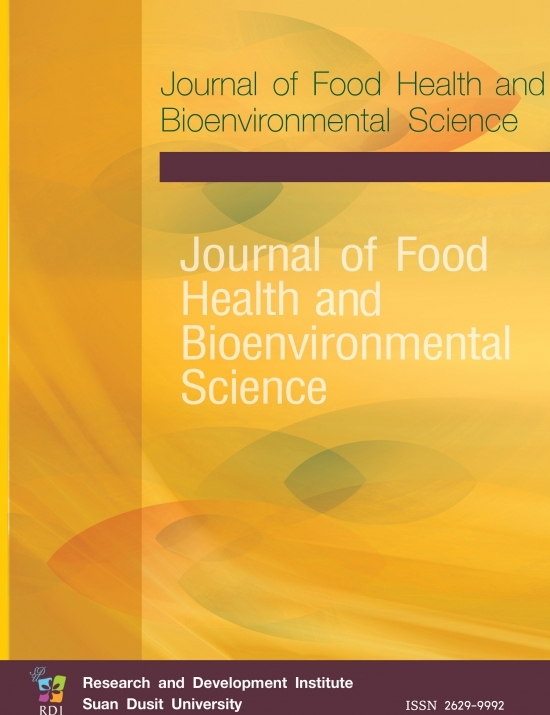Phytochemicals and Antioxidant Activity of Thai Rice Flowers
Keywords:
Phytochemicals, Antioxidant Activity, Thai Rice FlowersAbstract
The purpose of this study was to determine the phytochemicals (total phenolic,
flavonoid and anthocyanin contents) and antioxidant activity of 7 Thai rice flowers cultivar:
2 white rice, 2 red rice and 3 black rice. The total phenolic, flavonoid and anthocyanin
contents were measured by using Folin-Ciocalteu, colorimetric aluminum chloride and pH
differential methods, respectively. The antioxidant activities were determined by ferric
reducing antioxidant power (FRAP) and DPPH radical scavenging assays. The results of the
phytochemical screening of Thai rice flower cultivars revealed the total phenolic and
flavonoid contents in all the extracts, but anthocyanin was no detectable in this rice
flowers. The total phenolic and flavonoid contents were in the range of 1225.73-2160.43
mg GAE/100g of sample and 1121.96-1803.19 mg quercetin/100 g of sample, respectively.
The antioxidant activity by DPPH and FRAP assay were in the range of 1.060-6.928 ppm
(IC50) and 11203.01-983.71 mM Fe(II)/100 g dry weight, respectively. The rice flower extract
from white rice (Jasmine 105) had significantly higher phytochemicals and antioxidant
activity than the extracts from other rice flowers. The results suggested that the Jasmine
105 rice flowers might indeed be potential sources for future novel antioxidants in food
and pharmaceutical formulations.








